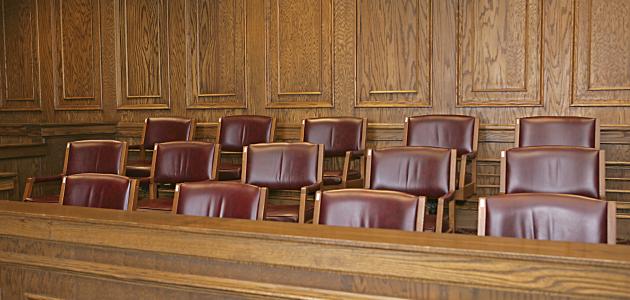- Law & Policy
A modern David versus Goliath confrontation is now unfolding in rural North Carolina. This past April a local jury awarded 10 plaintiffs each $75,000 in actual damages and $5 million in punitive damages against the pork producer Murphy-Brown LLC, a subsidiary of Smithfield Foods, which was acquired by China’s WH Group in 2013. The plaintiffs were able to prove that the continuous and deliberate actions of the hog farmers caused them to suffer “episodes of noxious and sickening odor, onslaughts of flies and pests, nausea, . . . difficulty breathing” and more. A related lawsuit using the same nuisance theory is now being brought against a Smithfield farm in North Carolina that’s home to 4,700 hogs. Both farms are part of the $2.9 billion hog industry that anchors much of North Carolina’s rural economy.
The defendants in both these cases are not shy in denouncing the initial jury verdict against Murphy-Brown? as “an outrageous attack on animal agriculture, rural North Carolina and thousands of independent family farmers who own and operate contract farms.” Smithfield’s CEO Ken Sullivan insists that personal dislocations necessarily “go hand in hand” with normal farming operations. And he protests that no liability should be imposed on hog farms that operate in full compliance with all applicable state and federal regulations. He made the dire forecast that if these verdicts stand, chicken, turkey, and even wheat farmers could be next. He warned ominously that Smithfield could pull out of the state altogether.
To avoid that risk, Smithfield and the hog farmers are looking for legislative relief. They proposed a bill that will set a legal presumption that no farm shall be treated as a nuisance if its operations comply with state and federal regulation. Would-be plaintiffs will have to prove their case not by a preponderance of the evidence, as under current law, but by the higher standard of clear and convincing evidence. Finally, the legislation stipulates that no farm could be branded a nuisance on the ground of “changed circumstances” after it is in operation for one year. These changed circumstances are broadly defined to include "a change in ownership, occupancy, or the use of the property that is affected by the alleged nuisance."
Nuisance disputes such as these go back hundreds of years. Now, as then, the correct approach rejects legislative fixes and allows private suits to go forward. Smithfield wants to externalize a huge portion of its costs on the lungs and comfort of its neighbors, but the loss should fall on the party that creates the harm, not on its neighboring victims. Smithfield’s nuisances have been defined under North Carolina law as nontrespassory physical invasions that are eerily similar to ordinary trespasses where one person enters his neighbor’s property without permission. To allow them to continue will lead to the overproduction of hogs, with a subsidy exacted from innocent neighbors, who cannot be said to have consented to the harm just because they are in the line of fire. It is appropriate for the courts to tell Smithfield and the hog farmers to mend their ways or shut down. Although these verdicts are lopsided—actual damages are too low and punitives too high—wiping the slate clean lets a well-understood wrong go unpunished. The defendants should be told to stop production until they clean up their act.
Most critically, Smithfield and the hog farmers should not be allowed to make a cozy legislative deal that prejudices their neighbors. Unfortunately, this all-too-common regulatory strategy seriously undercuts the effectiveness of modern environmental protections. Public environmental law works best when it protects the public against diffuse nuisances that are too costly to handle by private litigation. One good example is tailpipe regulations to control automobile emissions because it is not feasible for each Los Angeles resident to sue each automobile driver separately for the harms caused by that driver’s emissions. What’s needed is a coordinated attack on the aggregate effect: well-structured emissions standards will stop most of these harms before they occur. Public fines and vehicular inspections can take the place of private damage actions and private injunctions against continued nuisances. But in places like Los Angeles where pollution reaches high levels, a well-designed system of public regulation should not insulate polluters from the consequences of their harm, even if public sanctions displace the private rights of action.
The risk of this regulatory abuse is found in the well-named 2007 case of Irritated Residents v. EPA. The EPA negotiated a master consent decree, setting timetables for emissions controls with a variety of animal feeding operations (AFOs) who produced “eggs, broiler chickens, turkeys, dairy, and swine.” The decree covered “ammonia, hydrogen sulfide, particulate matter, and volatile organic compounds.” The EPA slowed down on the enforcement of its multiple environmental statutes because it found it difficult to calibrate the loss. But so long as major harms are imposed on these neighbors, why should any consent decree protect these AFOs from ordinary tort liability? Current administrative law goes astray when it allows a government consent degree with polluters to continue in operation for years. The older common law of nuisance, in contrast, has the great virtue of providing prompt and effective legal protection against hard-core pollution, with damages for past harms and injunctions against future ones. Ironically, modern environmental protection offers too little protection against garden-variety nuisances, while at the same time modern law goes too far in the opposite direction: The decision in Babbitt v. Sweet Home Chapters of Greater Oregon (1995) allowed government to immobilize the use of vast tracts of land for habitat preservation for endangered species, even without paying a dime in compensation, and in the total absence of any nuisance. Sad!
A second problem with the proposed North Carolina reform is less pressing. In most cases, the new, higher burdens of proof will not play a crucial role since many ongoing nuisances that meet the lower standard of proof will also meet the higher one. But occasionally, liability is sharply contested—and when that happens, it makes no sense to tip the scales in favor of potential polluters against their potential victims.
Third, the introduction of the “changed circumstances” defense raises the much vexed issue of whether, in response to a nuisance action, the defendant may show that the plaintiff “came to the nuisance.” One part of this purported defense holds that no party who buys land knowing that it is subject to a nuisance can complain of the risk. The second part of the defense would hold that no one who knows of a neighbor’s nuisance-like behavior may complain if the defendant’s preexisting noise or stench interfere with new activities undertaken by the plaintiff. But the general view rejects this defense.
To see why these defenses should be rejected, look at the entire cycle of events from start to finish. If the buyer cannot object to a nuisance, the putative seller of the property suffers a capital loss even though he has not yet sustained a physical loss. If a current owner cannot make a new use of his land, then the neighbor’s unilateral action lets the neighbor obtain an easement to cause damage to someone else’s property for free. There is, of course, no reason to stop the current activities of the neighbor if they cause no current operational harm. But the price that the defendant pays for avoiding immediate liability is a suspension of the statute of limitations until the plaintiff makes his new and proper use of his own land. The textbook example is the 1879 case of Sturges v. Bridgman, in which the court allowed a physician in a newly created office to stop the noisy work of a neighboring confectioner who had operated his equipment next door for many years. No one should be allowed to acquire unilaterally a perpetual easement over his neighbor’s land by moving first. Rejecting the coming to the nuisance defense stops that strategic behavior. The one sensible offset is that the nuisance maker gets a bit of time to wind down his operations—while paying damages for the interim losses.
It is far from clear whether the North Carolina legislature will allow new nuisance cases to go forward under the common law rules. But blocking these nuisance suits by statute creates its own legal risk that North Carolina will have to pick up the tab. In Loretto v. Teleprompter Manhattan CATV (1982), the Supreme Court held that “a permanent physical occupation authorized by government is a taking without regard to the public interests it may serve.” There is no good reason to distinguish the authorization of permanent nuisances from the authorization of permanent trespasses. So by protecting Smithfield and the hog farmers, North Carolina runs the substantial risk of imposing liability on itself. Matters need not come to that. For legal and economic reasons, North Carolina should allow the nuisance actions against Smithfield and the hog farmers to continue.
















